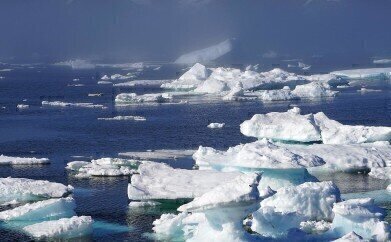Air Monitoring
How Does Black Carbon Impact the Environment?
Sep 04 2022
While fossil fuels may have powered the Industrial Revolution over the last 200 years and more, we have become increasingly aware of the damaging environmental repercussions that exploiting them produces. Carbon dioxide has stolen the majority of the headlines in this respect, but there are a variety of other gases, particles and contaminants emitted by their combustion which can also negatively impact the natural world.
Black carbon is chief among these, with some scientists arguing that the substance represents the second biggest contributor to climate change and global warming behind CO2. That’s because as particulate pollution (as opposed to a gaseous contaminant), it can retain heat in the atmosphere far more effectively than CO2. Here’s a deeper dive into this ubiquitous pollutant’s impact on the environment.
Warming the airways
Unlike elemental carbon, which is normally defined in terms of its thermal-optical properties, black carbon is so named for the amount of light it absorbs and scientists have developed sophisticated new sensing methods to quantify its ambient concentrations. This means that when particles of carbon float in the air, they absorb the light and heat sent down by the sun’s UV radiation, thus raising the ambient temperature of the atmosphere around them.
Indeed, black carbon is capable of absorbing more than a million times more solar energy than CO2 per volume. However, it stays in the atmosphere for a far shorter period than its more notorious counterpart; whereas CO2 can persist for centuries or even millennia, black carbon is normally removed from the air within a matter of days or weeks. Nonetheless, its ability to retain 1.1 watts of solar power per square metre is second only to CO2, at 1.56 watts per square metre.
Melting snow and ice
After a period of rain or snow, black carbon is washed from the air to the ground – but that isn’t the end of its dangerous potential. Winds can sweep the particles north towards the Arctic Circle and it can settle on the ice and snow found there, reducing their natural albedo (which is the scientific term for a surface’s ability to reflect sunlight away from it).
This means that the sun is more effective at warming the snow or ice, thus hastening its thaw. If these polar areas are allowed to melt earlier and freeze later each year, they can have a knock-on and potentially irreversible effect of increasing temperatures and diminishing ice sheets. What’s more, the expanded waters are likely to receive greater shipping traffic, which will only exacerbate the issue further.
Other undesirable outcomes
As well as warming the air and thawing the icecaps, black carbon is also responsible for detrimentally impacting the flora and fauna on planet Earth. Its presence in the air can prevent sunlight from reaching the ground and inhibiting the process of photosynthesis, while it can also artificially increase the temperature on foliage if it settles there, disrupting the plant’s delicate harmony.
Meanwhile, it can also interfere with patterns of precipitation. In extreme cases, this can result in severe droughts or damaging monsoons, but even on a smaller scale it can harm agricultural practices and lead to lower crop yields. That can be a significant problem for communities which rely on farming for their sustenance, as well as endangering food security on a more global scale.
Digital Edition
IET 34.2 March 2024
April 2024
Gas Detection - Biogas batch fermentation system for laboratory use with automatic gas analysis in real time Water/Wastewater - Upcycling sensors for sustainable nature management - Prist...
View all digital editions
Events
Apr 22 2024 Hannover, Germany
Apr 22 2024 Marrakech, Morroco
Apr 23 2024 Kuala Lumpur, Malaysia
Apr 23 2024 Kintex, South Korea
Apr 23 2024 Edmonton, AB, Canada


















